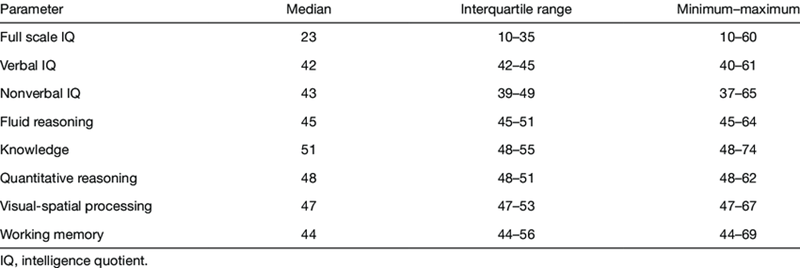The field of IQ testing is notably diverse, comprising a range of well-established and widely used types, each tailored with unique characteristics and specific focuses on different aspects of intelligence. These assessments are often designed with particular age groups or purposes in mind. Stanford-Binet Intelligence Scale, Wechsler Adult Intelligence Scale (WAIS), and Raven's Progressive Matrices are the most widely used testing types. While these tests are undoubtedly among the most well-known, the landscape of IQ testing is diverse, featuring a multitude of testing types designed to assess human cognition. Let’s explore some prominent types of IQ tests.
The concept of intelligence has intrigued humanity for centuries, and the quest to measure it has given rise to the development of Intelligence Quotient (IQ) tests. These assessments aim to quantify cognitive abilities and provide valuable insights into an individual's intellectual potential. Originating in the early 20th century, IQ tests have become indispensable tools in psychological assessment.
The three most popular types of IQ Tests are Stanford-Binet Intelligence Scales, Wechsler Adult Intelligence Scale (WAIS), and Raven's Progressive Matrices. Additionally, there are several types of intelligence testing, catering to various assessment needs in both clinical and research settings. Each of these intelligence tests brings unique features and focuses on different aspects of cognitive functioning.
The Stanford-Binet Intelligence Scales are a set of intelligence tests designed to measure cognitive abilities and intelligence in individuals, primarily children and adolescents. The test is named after its developers, Alfred Binet and Theodore Simon, who created the first version in the IQ test history in France in the early 20th century. The test was later revised and adapted by Lewis Terman at Stanford University, leading to the name "Stanford-Binet."

Image of an assessment result using Stanford Binet Intelligence Scales 5th edition (Source: Google)
Key features of the Stanford-Binet Intelligence Scales:
Stanford–Binet Fifth Edition (SB5) classification:
IQ range | Classification |
145-160 | Very gifted or highly advanced |
130-140 | Gifted or advanced |
120-129 | Superior |
110-119 | High average |
90-109 | Average |
80-89 | Low average |
70-79 | Borderline impaired or delayed |
55-69 | Mildly impaired or delayed |
40-54 | Moderately |
(Source: Wikipedia)
Developed by David Wechsler, the WAIS is one of the most widely used intelligence tests for adults. It assesses a broad range of cognitive abilities, including verbal comprehension, working memory, perceptual reasoning, and processing speed. The test provides a Full-Scale IQ score, as well as individual scores for various subtests.
Key features of the WAIS test:
WAIS classification:
IQ range | Classification |
130 and above | Very superior |
120-129 | Superior |
110-119 | High average |
90-109 | Average |
80-89 | Low average |
70-79 | Borderline |
69 and below | Mentally retarded |
Raven's Progressive Matrices is a non-verbal intelligence test designed to measure abstract reasoning and the ability to solve problems without relying on language or cultural knowledge. The test presents participants with a series of visual patterns, and individuals must identify the missing piece from multiple-choice options. It is often used to assess fluid intelligence.

Image of an IQ test question in the style of a Raven's Progressive Matrices
Key features of Raven's Progressive Matrices test
Raven's Matrices Classification
Grade | Percentiles |
Grade I or “Intellectually Superior” | At or above 95th percentile |
Grade II or “Definitely above the average in intellectual Capacity” | At or above 75th percentile |
Grade II+ | At or above 90th percentile |
Grade III or “Intellectually Average” | Between 25th and 75th percentile |
Grade III+ | Greater than median or 50th percentile |
Grade III- | Lesser than median |
Grade IV or “Definitely below average intellectual capacity” | At or below 25th percentile |
Grade IV- | At or below 10th percentile |
Grade V or “Intellectually Impaired” | At or below 5th percentile |
Here are four less common types of IQ tests that measure an individual's abilities:
The Woodcock-Johnson Tests of Cognitive Abilities are a comprehensive battery of intelligence tests designed to assess various cognitive abilities in individuals of different ages. The tests cover domains such as verbal comprehension, working memory, visual-spatial processing, and processing speed. The Woodcock-Johnson Tests aim to provide a comprehensive understanding of an individual's cognitive strengths and weaknesses.
Key Features of Woodcock-Johnson Tests:
The Cattell Culture Fair Intelligence Test (CFIT) is a set of non-verbal intelligence tests designed to minimize the impact of cultural and linguistic factors on intelligence assessment. Developed by Raymond B. Cattell, a prominent psychologist known for his work in intelligence testing, CFIT aims to provide a fair and accurate evaluation of cognitive abilities across diverse populations.
Key features of the Cattell Culture Fair Intelligence Test
The PIAT is a type of IQ test designed to assess an individual's academic achievement in various subject areas. It provides insights into their strengths and weaknesses in reading, mathematics, and spelling. This test is often used in educational settings to evaluate an individual's progress in academic skills.
Key features of the PIAT test:
UNIT 2 is a non-verbal intelligence test designed to assess cognitive abilities without relying on language skills. It is particularly useful when language differences or cultural considerations are of concern. The test aims to measure general intelligence through non-verbal tasks.
Key features of the UNIT 2 test:
The need for different IQ tests arises due to the diverse nature of human intelligence and the limitations of a one-size-fits-all approach. Various factors contribute to the necessity of different IQ tests:
Having a variety of IQ tests allows professionals to select the most appropriate tool based on the individual's characteristics and the purpose of the assessment.
Determining the "best" or most accurate IQ test depends on various factors, including the specific goals of the assessment, the age group being tested, and the cognitive domains of interest. Some well-established and widely recognized IQ tests include the Wechsler Adult Intelligence Scale (WAIS), Stanford-Binet Intelligence Scales, and Raven's Progressive Matrices.
Each test has its strengths and limitations. The choice of the "best" test often depends on the context and the characteristics of the individual being assessed. It's crucial to consider factors such as age, cultural background, and the specific cognitive abilities of interest when selecting an IQ test.
Read more: Best free online IQ Tests in 2024
Yes, practicing different types of IQ tests can lead to an improvement in scores. However, the extent of improvement may vary. Here are some considerations:
However, it's essential to note that excessive practice on specific test items may inflate scores and not necessarily reflect a genuine increase in cognitive abilities. Moreover, some IQ tests are designed to minimize the impact of practice by using novel stimuli.
In summary, while different types of IQ tests may contribute to different test performance, the result of IQ scores should consider the context, purpose of the assessment, and potential effects of practice on specific test items.